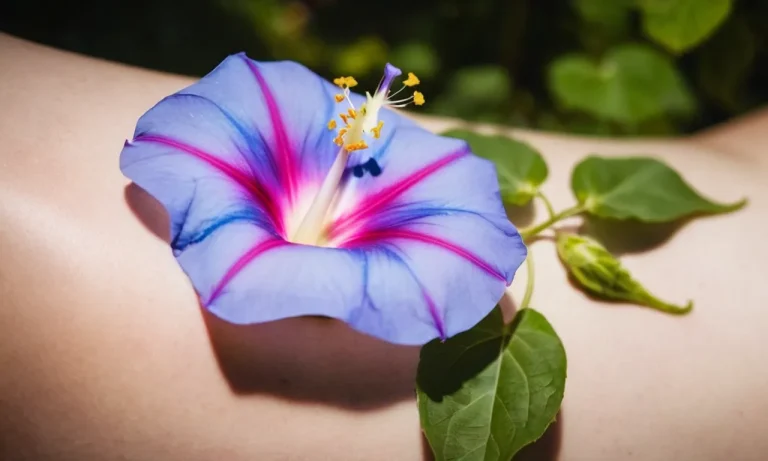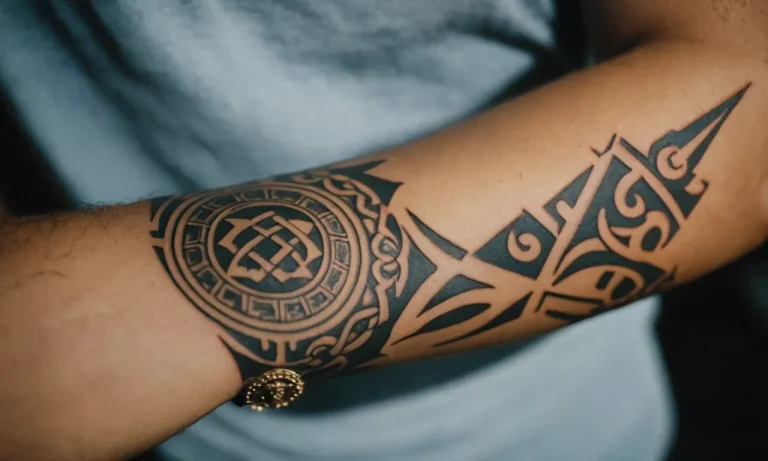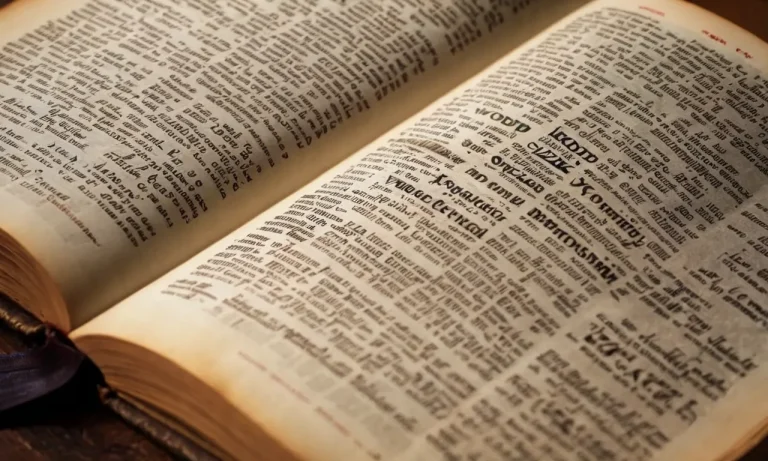Who Was Orpah In The Bible?
The story of Orpah in the Bible is one that often gets overlooked in favor of the more popular account of her sister-in-law Ruth. But while brief, Orpah’s appearance in the Book of Ruth reveals important insights into her background, choices, and overall legacy.
If you’re short on time, here’s a quick answer to your question: Orpah was the Moabite wife of Chilion, one of Naomi’s two sons, in the Old Testament. She chose to remain in Moab while Ruth accompanied Naomi to Bethlehem after the deaths of all their husbands.
In this comprehensive guide, we will explore who exactly Orpah was, dive deep into her relationships with Chilion and Naomi, analyze the pivotal decision she made to stay in Moab, and discuss why her character still matters despite her brief role in Ruth’s famous story.
Orpah’s Background and Marriage to Chilion
Orpah’s Moabite ethnicity and polytheistic religion
Orpah was a Moabite woman who grew up worshipping multiple pagan gods. The Moabites descended from Lot’s incestuous relationship with his eldest daughter (Genesis 19:37) and lived east of the Dead Sea in an area called Moab.
As polytheists, the Moabites worshipped national gods like Chemosh and Ashtar-Chemosh as well as gods from neighboring peoples like Baal. Fertility rituals, child sacrifice, and temple prostitution were common practices.
Orpah would have participated in these religious rituals and celebrations growing up.
Chilion’s lineage and status as Naomi’s son
Orpah’s husband Chilion traced his ancestry back to Bethlehem in Judah. He was one of the two sons born to Elimelech and Naomi, who left Judah during a famine and relocated about 50 miles southeast to Moab (Ruth 1:1-2).
There in Moab, Chilion and his brother Mahlon both married Moabite women – Orpah and Ruth. Though circumstances led Elimelech’s family to live in Moab, their ethnic and religious heritage remained Jewish.
Orpah and Chilion’s life married in Moab
Orpah and Chilion were married in Moab, where they lived together as husband and wife. Their day-to-day life consisted of typical ancient activities like gathering food, cooking meals, making clothing, and maintaining shelter.
As a Moabite, Orpah would have continued worshipping her pagan gods after marriage. Scriptures don’t mention Orpah and Chilion having any children, though 10 years passed from their wedding until Chilion’s untimely death (Ruth 1:4-5).
His passing ended Orpah’s marriage and changed the trajectory of her life.
Orpah’s Close Ties with Naomi
Naomi’s guidance and motherly role in Orpah’s life
Naomi was like a mother to both Ruth and Orpah as they were married to her sons. She provided love, care, and guidance as they adjusted to married life in a new family. Even after Naomi’s sons passed away, the deep bond remained between the three women, especially between Naomi and Orpah, her daughter-in-law.
Naomi had mentored Orpah on managing a household, supporting her husband, and living according to the customs and practices of the community. This motherly role undoubtedly drew Orpah close to Naomi, cherishing her wisdom and experience.
Grief and losses that connected Orpah and Naomi
Naomi and Orpah both experienced the devastating loss of their husbands. This shared grief brought them closer, as they comforted each other during the difficult period of mourning and adjustment after their husbands’ deaths.
The Bible notes that Orpah wept aloud when saying goodbye to Naomi, highlighting the depth of sorrow they shared (Ruth 1:14). The immense loss of their spouses, future hopes, and dreams tightly bonded Orpah and Naomi in their time of deep pain and need.
The depth of relationship hinted at in the text
Though brief, the Bible’s account of Orpah and Naomi’s relationship hints at great affection and closeness. Orpah clung to Naomi, indicating a dependent, cherished connection (Ruth 1:14). She is called “Ruth’s sister,” which may suggest Naomi considered both women like daughters to her (Ruth 1:4).
Additionally, Naomi blessed Orpah as she left, wishing that God would show hesed (covenant loyalty) to Orpah as she had to the dead and Naomi (Ruth 1:8-9). This intimate blessing implies Naomi and Orpah cared deeply for one another.
Orpah’s Choice to Remain in Moab
Her initial desire to accompany Naomi
After the tragic deaths of their husbands, Orpah and Ruth faced difficult decisions. As widows without children, their futures looked bleak. When Naomi decided to leave Moab and return to Bethlehem, Orpah and Ruth initially declared they would go with her.
They had developed close bonds as daughter-in-laws and did not want to abandon Naomi in her grief and vulnerability. Accompanying Naomi to Judah represented an unknown future, but Orpah and Ruth were willing to take that risk out of loyalty and love for their mother-in-law.
Orpah’s ultimate decision analyzed
Though Orpah initially committed to go with Naomi, she ultimately had a change of heart. When Naomi urged Orpah and Ruth to remain in Moab, Orpah reluctantly agreed. Several factors likely influenced her decision:
- Fear of leaving her homeland for a foreign nation
- Concerns about fully assimilating into Judahite culture and worship
- Desire to remarry within her own people and have security
- Uncertainty about Naomi’s future and ability to provide for her
While difficult, Orpah’s choice to stay in familiar Moab is understandable. As a childless widow, she risked losing all security by going to Judah. Though saddened to part from Naomi, Orpah chose the path that seemed sensible for survival.
How Orpah moved forward after her loss
Little detail is given about Orpah’s life after she parted from Naomi. She likely lived as a widow in her father’s household, depending on him and her brothers for provision. Eventually she may have remarried within her clan to gain protection and status.
Despite losing her husband and Naomi’s companionship, Orpah appears to have accepted her losses and made the most of her options in Moab. Her decision to remain behind was not a moral failing, but a reasonable choice given her vulnerability.
The Significance of Orpah’s Brief Role
Contrast drawn with Ruth’s faithfulness
Although she only appears briefly, Orpah serves as an important contrast to Ruth’s steadfast faithfulness. When given the choice to accompany Naomi back to Bethlehem or return to her people and her gods, Orpah chose the latter.
Unlike Ruth, who refused to abandon her mother-in-law even after both her husband and sons had died, Orpah turned back. This highlights Ruth’s remarkable commitment to Naomi and the God of Israel.
What Orpah represents in the Book of Ruth
Orpah’s decision to remain with her people represents a few key themes in Ruth. First, it contrasts pagan religious beliefs with Ruth’s wholehearted embrace of Naomi’s God. While Orpah returned to false gods, Ruth declared, “Your people will be my people and your God my God” (Ruth 1:16).
Second, Orpah signifies the temptation to pursue worldly security over spiritual rewards. While Ruth gave up her homeland for an uncertain future in Judah, Orpah took the safe route home.
Lasting lessons from the account of Orpah
Although brief, Orpah’s story contains important lessons. Her unwillingness to leave family and familiar gods reminds us that following God sometimes requires difficult choices. Ruth’s story would not shine as brightly if not compared to Orpah’s departure.
Additionally, Orpah calls readers to examine the idols and worldly affections that compete with their allegiance to God. Ruth left everything behind to pursue God’s kingdom first. What might we need to abandon, like Orpah did, to seek that kingdom wholeheartedly?
Conclusion
While easy to skim past in Scripture, Orpah’s presence carries weight and significance in the Book of Ruth. As Naomi’s daughter-in-law, her background, relationships, choices, and inclusion in the text all have deeper meaning upon closer study.
Most prominently, Orpah serves as a foil – her decision not to accompany Naomi to Judah contrasts powerfully with Ruth’s stirring faith and loyalty. Yet she should not be merely resigned as a secondary player; Orpah models the universal human realities of grief, longing, doubt, and the difficult crossroads we sometimes face.
As a result, Orpah will continue to resonate as an instrumental, insightful biblical persona across generations of readers.








